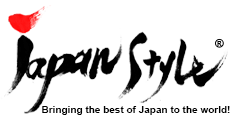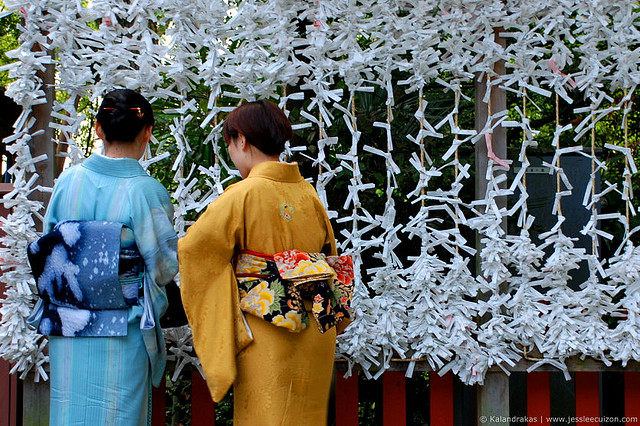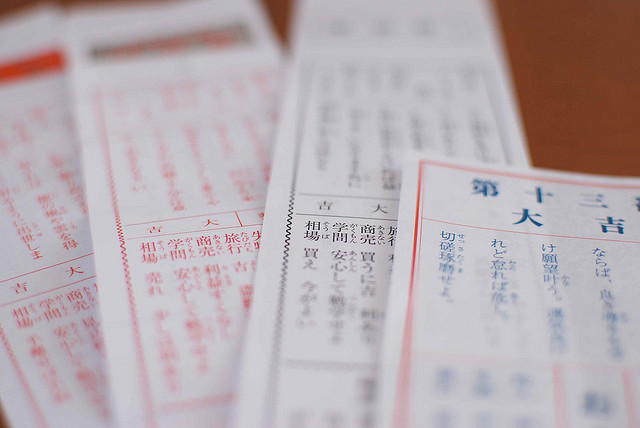I previously wrote about hatsumode or the first visit to a shrine a few times around the New Year’s Day, so I mentioned about this briefly? I probably did.
Anyway, an interesting article I would like to introduce today is about omikuji or the sacred lot.
When you say New Year in Japan, one of the things instantly comes up in your mind may be hatsumode or the first visit to a shrine. And when you say hatsumode, you can’t just forget about omikuji, which tells you how this year will treat you! In other words, omikuji plays pretty important role in Japanese culture. Even for those who don’t usually believe in god, Buddha or anything, their fortune for the New Year can be attractive enough to know:-)
Everybody would love to draw daikichi, excellent luck to start the New Year with a brilliant feeling if possible, but how often daikichi can be drawn???
According to Senso-ji Temple in Asakusa, Tokyo, where approx. 3 millions people visit for hatsumode, their proportion of omikuji is as follows; daikichi, excellent luck is 17% of all, kichi or good luck is 35%, hankichi or semi-good luck is 5%, shokichi or a little luck is 4%, sue-shokichi or uncertain but a little luck is 3%, suekichi or uncertain luck is 6% and kyo or bad luck is surprising 30%…
Kyo, the worst one is 30%! …which is pretty a lot, isn’t it…? (-_-;)
According to the article, omikuji is first created approximately 1000 years ago by a monk of Enryaku-ji Temple at Mt. Hiei, called Jiei Daishi Ryogen. And Senso-ji Temple has been faithfully following the omikuji proportion, which Ryogen originally determined. However, omikuji in general can be altered, depending on the social situation, so it may not be all the same among temples.
Wow, I didn’t know that omikuji has such a long history (・。・)
Anyway, even if you draw the worst one during your stay in Japan, don’t get too upset about it. According to the article, omikuji does not foresee something bad is happening to you, but it just telling you to look yourself again and refresh your mind for the Near Year. So even if you are lucky enough to draw daikichi, at least one of those sections like your wish, health or love suggests you to be careful.
In other words, don’t be just too excited about the fact you drew daikichi. It is important to read what is written in your omikuji slip carefully and follow them.
Here is a tip for those who unfortunately drew kyo, the bad luck. Don’t try to draw again to see better one; if your slip appeared to be kyo, tie your slip to a tree in the shrine after reading it carefully. For those drew kichi, it seems to be better to fold it into small piece, and put it in a corner of your chest.
What do you think about today’s article?
Majority of omikuji is written in Japanese, but more and more omikuji is now written in both Japanese and English. So if you have a chance to visit a shrine in Japan, do try draw an omikuji. It is not too expensive, ranging from 100 yen (equivalent to US$1.30), so you will be able to try easily~♪
Source: web R25
This is JAPAN Style!









![[Photoblog] Blue Autumn Sky and Hannya-ji Temple♪](http://www.japanstyle.info/wp-content/uploads/2012/10/20121021_photoblog_blue-autumn-sky-with-hannya-temple-65x65.jpg)

Recent Comments